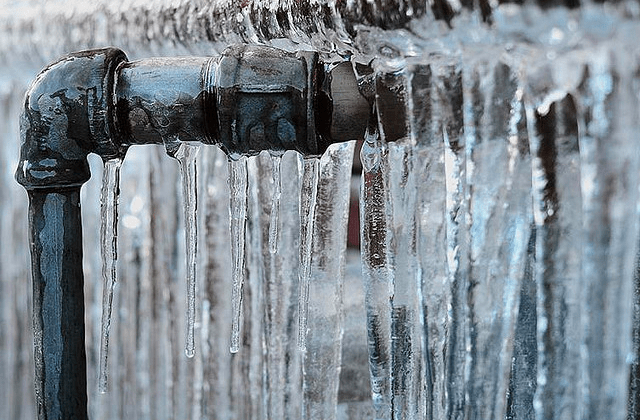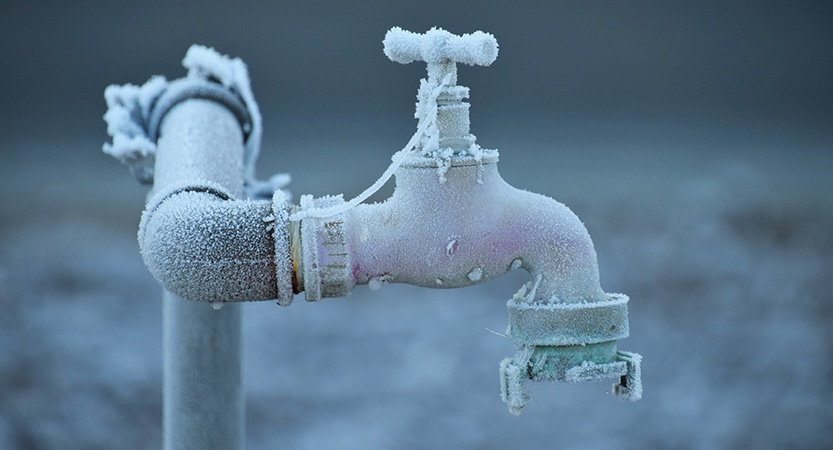Prevent Frozen Pipes in Winter: Pro Tips
Prevent Frozen Pipes in Winter: Pro Tips
Blog Article
We've uncovered this post on How to prepare your home plumbing for winter weather below on the net and concluded it made good sense to talk about it with you over here.

Cold weather can damage your pipes, especially by freezing pipelines. Right here's how to stop it from taking place and what to do if it does.
Intro
As temperature levels decline, the risk of icy pipes increases, potentially resulting in costly repair services and water damage. Understanding exactly how to prevent frozen pipelines is vital for property owners in chilly climates.
Avoidance Tips
Insulating susceptible pipelines
Wrap pipes in insulation sleeves or make use of warm tape to secure them from freezing temperature levels. Concentrate on pipelines in unheated or outside locations of the home.
Home heating methods
Maintain indoor rooms effectively warmed, especially areas with pipes. Open up closet doors to enable warm air to flow around pipelines under sinks.
Just how to determine frozen pipes
Try to find decreased water flow from faucets, uncommon smells or noises from pipes, and noticeable frost on revealed pipes.
Long-Term Solutions
Structural adjustments
Consider rerouting pipelines far from exterior wall surfaces or unheated locations. Add added insulation to attics, basements, and crawl spaces.
Updating insulation
Purchase top quality insulation for pipelines, attics, and walls. Correct insulation helps preserve consistent temperatures and decreases the threat of icy pipelines.
Securing Outside Pipes
Garden hose pipes and outside taps
Separate and drain pipes garden hose pipes before winter months. Set up frost-proof faucets or cover exterior faucets with protected caps.
Understanding Frozen Pipelines
What triggers pipes to ice up?
Pipes ice up when exposed to temperatures listed below 32 ° F (0 ° C) for expanded durations. As water inside the pipes freezes, it increases, taxing the pipe walls and potentially creating them to rupture.
Threats and problems
Icy pipelines can result in supply of water disturbances, residential property damage, and pricey fixings. Burst pipelines can flood homes and trigger comprehensive structural damage.
Indications of Frozen Pipeline
Identifying frozen pipelines early can avoid them from bursting.
What to Do If Your Pipelines Freeze
Immediate actions to take
If you suspect frozen pipes, maintain faucets open up to relieve stress as the ice melts. Use a hairdryer or towels taken in hot water to thaw pipelines gradually.
Verdict
Stopping frozen pipelines calls for proactive actions and fast feedbacks. By understanding the reasons, indicators, and safety nets, house owners can safeguard their plumbing throughout winter.
5 Ways to Prevent Frozen Pipes
Drain Outdoor Faucets and Disconnect Hoses
First, close the shut-off valve that controls the flow of water in the pipe to your outdoor faucet. Then, head outside to disconnect and drain your hose and open the outdoor faucet to allow the water to completely drain out of the line. Turn off the faucet when done. Finally, head back to the shut-off valve and drain the remaining water inside the pipe into a bucket or container. Additionally, if you have a home irrigation system, you should consider hiring an expert to clear the system of water each year.
Insulate Pipes
One of the best and most cost-effective methods for preventing frozen water pipes is to wrap your pipes with insulation. This is especially important for areas in your home that aren’t exposed to heat, such as an attic. We suggest using foam sleeves, which can typically be found at your local hardware store.
Keep Heat Running at 65
Your pipes are located inside your walls, and the temperature there is much colder than the rest of the house. To prevent your pipes from freezing, The Insurance Information Institute suggests that you keep your home heated to at least 65 degrees, even when traveling. You may want to invest in smart devices that can keep an eye on the temperature in your home while you’re away.
Leave Water Dripping
Moving water — even a small trickle — can prevent ice from forming inside your pipes. When freezing temps are imminent, start a drip of water from all faucets that serve exposed pipes. Leaving a few faucets running will also help relieve pressure inside the pipes and help prevent a rupture if the water inside freezes.
Open Cupboard Doors
Warm your kitchen and bathroom pipes by opening cupboards and vanities. You should also leave your interior doors ajar to help warm air circulate evenly throughout your home.

Hopefully you enjoyed our topic on Preventing and dealing with frozen pipes. Thanks so much for finding the time to read our post. Enjoyed our review? Please share it. Help other people discover it. I take joy in your readership.
Click Here Report this page